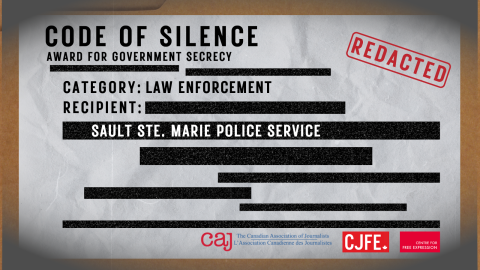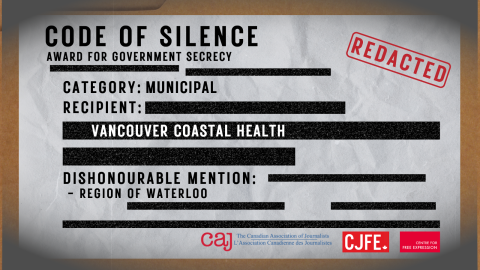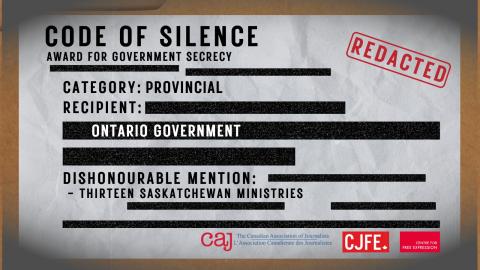Playing Hide and Seek with Public Records
An Ontario Divisional Court decision on a six-year-old battle at York University about secrecy in university real estate projects was published on September 1, 2022.
The decision in York University Development Corporation vs. Information and Privacy Commissioner of Ontario et al. ended a long game in which the University tried to hide records that were legally accessible to the public.
First, some background to the story: York University is the sole shareholder as well as the parent body of the York University Development Corporation (YUDC), and indeed the development corporation says on its website that it is “the real estate arm” of the university – but in the case under discussion both entities went out of their way to make it seem that they are separate, which would have made a difference under Ontario’s Freedom of Information and Protection of Privacy Act.
The decision is relevant far beyond York: UBC and Simon Fraser are among the Canadian universities that have hived off real estate subsidiaries. (Some old-fashioned universities continue to have former professors turned administrators make real estate decisions, but internationally the gentlemen’s club approach is on the wane, with universities even in The Netherlands, where they are all strictly public, setting up real estate “arms” staffed by people coming from the private sector).
Many Canadian university members believe that the wholly owned quasi-private subsidiary is a neoliberal invention. It is not well known that the public sector including governments themselves have used the tactic of creating a special-purpose subsidiary for decades. Entities such as Ontario’s Metrolinx and the YUDC have deep historical precedents. These subsidiaries can be said to be public-private partnerships all by themselves since they routinely claim to be independent and private when convenient but at other times stress their public sector role. Holding that their records are secret (as the YUDC tried to do in the case under discussion) is a private-sector habit that is common amongst these entities. Clearly, as public bodies including governments created subsidiary corporations (replacing departments and ministries, in many cases), the legal fact that the subsidiaries are exempt from the transparency rules imposed in recent years on public sector entities becomes increasingly untenable.
In the early twentieth century, there were no transparency laws. At that time the main advantage of creating arms-length wholly owned corporations was to make government debt look smaller than it actually was. The debt of the Toronto Harbour Commission, for example, created in 1912, was not the city’s debt –a huge advantage since at that time provincial laws were imposing new limits on municipal finance. Entities such as transit or utility commissions issue their own bonds and are financially independent, formally, but in reality they are essential components of the broader public sector, and these days often get rivers of public money.
Canadian provinces tried to limit municipal power and infrastructure financing by placing strict limits (such as Ontario’s requirement, still in effect today, that cities present balanced budgets every year, something that no provincial government would be able to do). But local leaders found workarounds: special purpose ‘off the books’ authorities were the easiest solution to the problem of top-down limits on borrowing. Decades later, neoliberalism fostered the proliferation of special purpose ‘agencies, boards, and commissions’, through a process that UK scholars have dubbed ‘the boardization of government’.
These entities were and still are structured as if they were for-profit corporations, with their own boards and their own credit rating. Their board meetings are seldom open to the public, and their records are usually not available. (By contrast, everything cities and some government departments do is these days documented online). Universities in Canada are all subject to provincial transparency laws such as Ontario’s Freedom of Information and Personal Privacy Act (FIPPA), whether they like it or not. The question is: can universities avoid transparency laws by creating subsidiaries? Clearly, they can, in current Canadian law. But should they?
A couple of years ago I, together with legal scholar Alex Flynn, looked into the informational practices of Waterfront Toronto (WT), one of the most powerful ‘special purpose’ semi-public corporations in the country. WT’s numerous reports are full of exciting drone-eye videos; but one looks in vain for any details of its deals with real estate developers. After seeing the Sept. 1 court decision, I was curious to see whether WT, currently spending a billion and a half dollars on flood protection, learned lessons about transparency -- since that was a key criticism voiced back when the organization was negotiating with a Google affiliate regarding a possible ‘smart city’ project on the waterfront. What I found was that the last meeting of WT’s Investment and Real Estate Committee, in July 2022, opened at 2:30 pm; the land acknowledgement was uttered in public, but the working ‘public session’ lasted exactly from 3:55 pm to 4 pm. Five minutes of public session -- devoted to the board voting on motions arising from the “closed” session. It would have been a waste of time for any urban affairs journalist to attend the meeting.
But back to the York University court decision. We learn in the judgment that although the York University Development Corporation (YUDC) is not subject to the provincial freedom of information law, there was in fact some mixing of papers as well as of people, a mixing which confounded the question of whether certain documents could be made accessible. Today the president of the university, the chair of the board, and the university’s lawyer all sit on the board of YUDC, but during the relevant time (2016-17) the key figure straddling the two supposedly separate entities was the university’s vice-president for finance and administration.
It seems – one cannot really tell what happened – that the vice-president’s administrative assistant did not realize the records of the YUDC should be kept separate from university records and hence removed from any possible Freedom of Information request. “Clerical error” was cited – which probably means that the boss failed to tell the hapless assistant she had to pretend there is a Chinese wall between the two entities. The vice-president justified the mixing by claiming that YUDC did not give him an office, so he had to keep YUDC papers in his regular university office.
The vignette about the vice-president’s mixed-up papers underlines the fictional nature of the division between the entity that is subject to FIPPA (the university) and the one that is not (YUDC). The lawyers for the development corporation (probably used to real estate deals) were not at all embarrassed by the secrecy: they told the court that “YUDC’s board of directors’ memos and packages are only distributed to members of our Board of directors and not to any other parties inside or outside of the university. We have a reasonable expectation that the materials are provided in confidence.”
Fortunately for democracy, neither the Ontario Privacy Commission’s adjudicator nor the court that heard the appeal by YUDC of the adjudicator’s decision went along with the claim that everything YUDC does can be kept secret. (Incidentally the university did lean on YUDC to the extent of revealing a couple of documents, but others were withheld, with the university’s approval).
The judgment published September 1 contains a bit that seems to bode well for future challenges to secrecy. The court in para 48 said York University cannot “divest itself of responsibility and accountability for records directly related to its statutory mandate by choosing to create a corporate entity to discharge its mandate to manage its real property... [and] that York could not avoid the application of FIPPA by entering into an arrangement with YUDC to assist it in carrying out an aspect of York’s statutory mandate”
Unfortunately, the phrase ‘statutory mandate’ sounds as if it has a definite legal meaning, but it does not. Does building gyms and playing fields belong within the statutory mandate of universities? Physical activity is not mentioned in statutes such as the University of Toronto Act. And is providing public transit within the province’s statutory mandate? Or is it just a political commitment? Who knows. Experts in administrative litigation can start to sharpen their pencils.
So, the York court decision is not a resounding victory for transparency, given the court’s emphasis on “statutory mandate” (and its lengthy meandering through the many meanings of the legal phrase “in control of a document”, which can be set aside here but will further encourage experts in judicial review to think up future fights).
But if we want to see the glass half full, we can say that seeing the YUDC lawyers rapped on the knuckles in court ought to bring a bit of hope to those who believe public business should be conducted with transparency and the public should not be denied their right to information.



